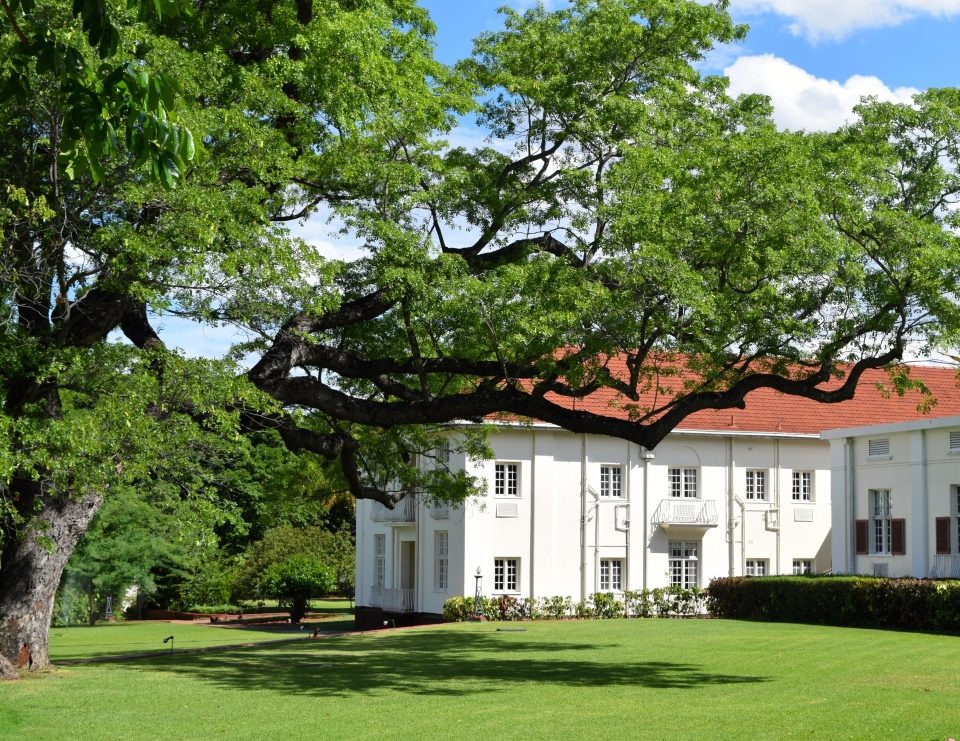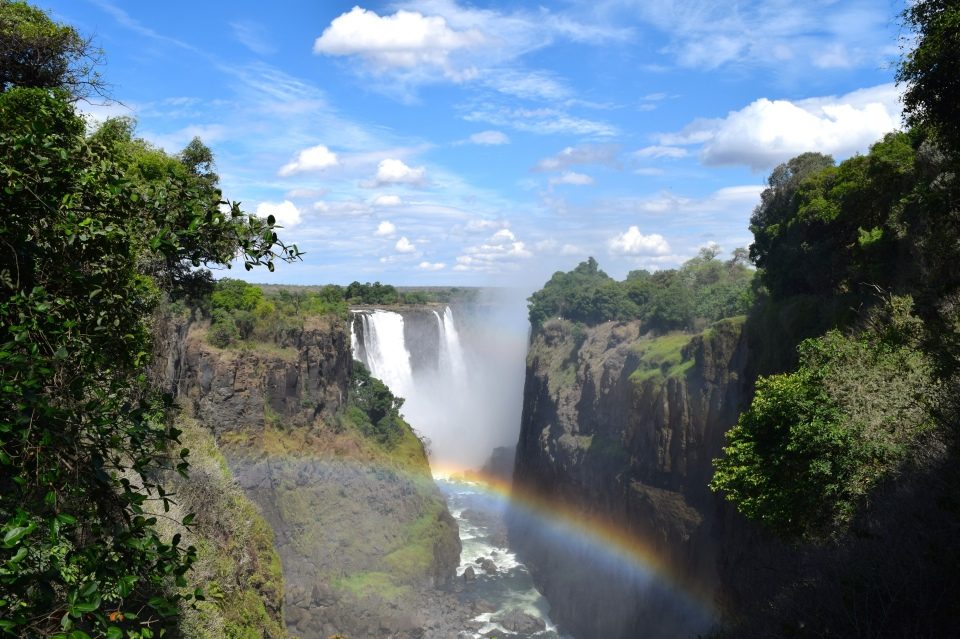
And then, 24 hours later, he was gone. The thing which so many people had hardly dared hope for, and certainly not conceived would come any time soon, was suddenly, miraculously, upon them.
Victoria Falls has been the centre of Zimbabwe’s tourism industry ever since the infamous Dr. Livingstone pitched up here in 1855. To the indigenous Tonga, this epic waterfall at the point where the Zambezi River crashes across the Zimbabwe-Zambia border is known as Mosi-oa-Tunya (“The Smoke that Thunders”). It’s a more suitable name. You hear the roaring of the water long before you see it, and the air is moist with the billowing clouds of spray.
Whatever chaos has gone on in Harare, it’s never really been felt in Victoria Falls. The UNESCO World Heritage falls and nearby town seem to exist in their own little bubble, far enough away. I, like many foreign visitors, had crossed the road border from Zambia on a dual country visa, and if it wasn’t for yet another stamp in my passport, I’d scarcely have known I’d entered Zimbabwe. Yes, there was a small police presence, but not more noticeable than in any of the surrounding countries, and the bus loads of package holiday makers were snapping away regardless.
The sight of one of the largest waterfalls in the world — twice the height of Niagara Falls and with a record of 700,000 cubic metres of water pounding over the cliff each minute — is more than enough to grab my attention
Victoria Falls is one of those curious small towns which seems to exist solely for tourism purposes. It’s necessary to pass through, but the town itself is no great attraction, save for one extraordinary building: the Victoria Falls Hotel. Built in 1904 and looking down the Second Gorge, to step over the threshold is to step back in time. It was intended to service first class travellers on Cecil Rhodes’ ill-fated Cape to Cairo Railway, and famous guests of note include King George VI and the future Elizabeth II.

I sat on the hotel’s Stanley’s Terrace overlooking the immaculate lawns, and felt quite the Edwardian lady. My high tea was served in a bone china tea service, of course, and the sandwiches were cut just so. Elegantly attired couples sat chattering at a politely low volume, and the staff moved gracefully from one table to the next with silver teapots and tiered stands of scones and cake. Every now and then a younger guest would surreptitiously slip out onto the grass to take a selfie with the hotel behind, but other than that, nothing here has changed for a century.
The Victoria Falls Hotel has its own path from the bottom of its gardens along the top of the gorge to the falls. It is an easy enough walk, and depending on the time of day, you will see bungee jumpers throwing themselves off the bridge, kayaks and rafts bouncing about on the white water rapids, and perhaps even a microlite or helicopter buzzing away overhead. The Zambezi River has an undeniable pull, and an entire adventure industry has grown up to cater for those adrenaline junkies who want to experience it from every appreciable angle.
I, however, was determined to keep both feet firmly on the ground. It’s not that I am unadventurous, but rather that the sight of one of the largest waterfalls in the world — twice the height of Niagara Falls and with a record of 700,000 cubic metres of water pounding over the cliff each minute — is more than enough to grab my attention.
The best views of Victoria Falls are from the Zimbabwean side of the border, where a footpath through the forest runs parallel to the falls on the other side of the gorge. There are more than a dozen strategically positioned viewpoints between Livingtone’s Statue and Boiling Pot, where you stare down into a seemingly steaming abyss.

It was mid-afternoon and it was hot and humid. Even keeping mostly to the shade, I was dripping in sweat and berating myself I hadn’t made it here for a cool sunrise. Still, the walk was good for me and, more importantly, as soon as I hiked past the Main Falls and Livingstone Island, I pretty much had the viewpoints to myself.
Sophie travelled to Zimbabwe with bespoke tour operator Journeysmiths (journeysmiths.co.uk), who offer a seven night Zimbabwe safari, incl. three nights at Victoria Falls Hotel and flights, from £5,266 pp.


